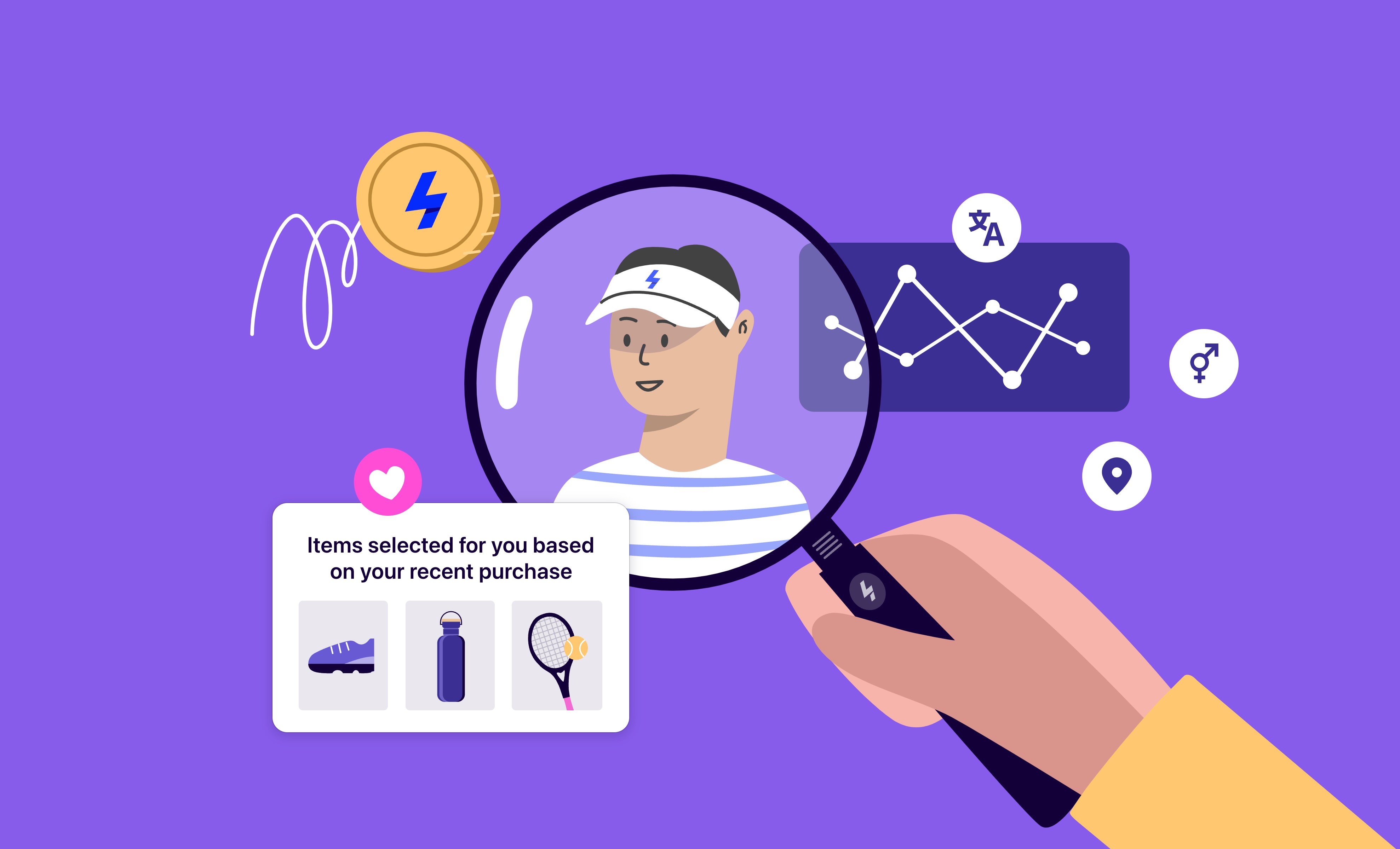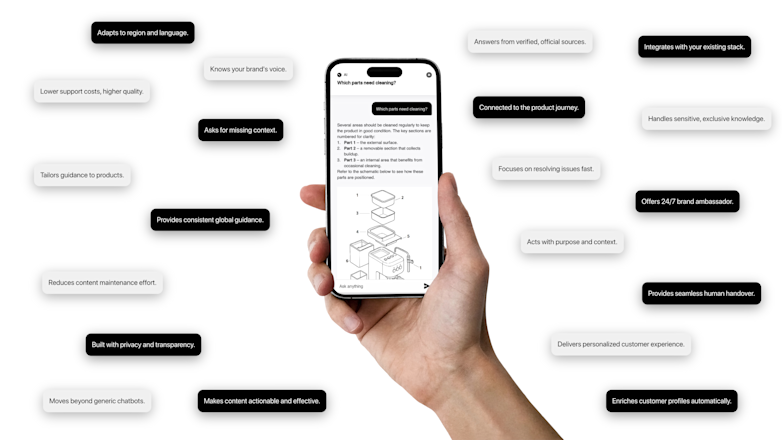
Understanding customers is critical to business success. It's like having a compass to help you navigate the complex landscape of business.
When a company collect information on its customers, it gains a more nuanced understanding of their preferences, behaviours, and needs. This knowledge can be used to improve product development and customer experience to gain a competitive advantage over competition. The more targeted your offer is to your customer base sales, by differentiating from competition.
To build a thriving business, you must put time, attention, and effort into improving customer experience. Customers are the heart of a business; when satisfied with your products and service, they stay back and may bring in new customers.
When you are able to identify and understand customers' preferences, you can deliver them the best service, fulfilling their needs and expectations. It builds business reputation, drives sales, improves brand awareness, increases conversion rate, and helps in business growth.
There are several ways of getting to know your customers, but the best ones are:
Putting yourself in their place.
Using Customer Relationship Management (CRM) tools.
Ask for feedback and what they think about you.
In this blog, we will learn why it is essential to focus on understanding customer needs and how the information helps your business grow.

The importance of knowing your customers
You don't need anyone to describe how important customers are for a business. When there is no customer, there is no business. Knowing them and gaining insights into their needs is the best way to retain your existing customers while acquiring new ones.
Customer needs can be either physical or psychological. Physical demands are easy to detect, and brands can quickly develop solutions, but understanding psychological needs are complicated. It plays an influential role in the decision-making process of a customer.
For example, if a customer is hungry, it is their physical need, but what type of food will fulfill their cravings is a psychological need.
Knowing your customers means:
Knowing the market
More than half of businesses fail in the first five years because the US Bureau of Labor Statistics calls them "No market need." It is, therefore, necessary for a business to understand the market needs and produce goods or services that meet them.
Entrepreneurs call this Product-Market Fit, requiring Value Proposition Canvas with Value maps and Customer Profiles at the center. Therefore, getting to know your customers is essential to detect how much you provide for the current market need.
Adapting to the changing needs
Customer demands keep changing, and keeping up with the trends is a hurdle for businesses of any size. To keep track of these changes, you must survey customers and understand their differences in behavior and preferences.
In 2023, being able to quickly adapt to the changing needs in the market is crucial to stand out from competition. Understand customers has never been more important for businesses!
Previously, there were only a handful of channels to communicate with customers, but today we have multiple channels to connect. This made brands put effort into understanding customer needs and knowing the places where they can connect with them and spread out messages.
How to communicate
To communicate with customers, you need to understand their language, interests, gender, age, demographics, etc. When brands know their customers, they can incite customers' interest, stimulate desires and mobilize in making a favorable decision.
Building strong relationships
Acquiring new customers is more costly than retaining old ones. Therefore, getting to know your customers can convert them into a loyal base, and fulfilling their needs makes them satisfied and attached to the business for a long time.
To retain customers over time it's important to offer prompt and relevant customer service to support them in their user journey. Good customer service entails more than just responding to immediate concerns; it includes anticipating and understanding customer needs, providing personalised solutions, and continuously improving the overall customer experience.
Nurturing and retaining existing customers through well-structured loyalty programs can prove to be a remarkably cost-effective strategy. These programs enable businesses to establish deeper customer relationships, forging a personalized connection that transcends mere transactions.
The foundation of successful loyalty programs lies in their ability to create a two-way relationship. Customers who feel genuinely valued are more likely to reciprocate with increased patronage and repeat purchases.
What are the main customer needs?
Customer needs vary depending on the product and service types you produce. Here are a few general customer needs listed below:
Customer needs for products
User experience: The overall experience of using your product must be intuitive and user-friendly.
Functionality: Customers look for products that are easy to use and solve specific needs.
Convenience: The product you sell must effectively and efficiently meet customer needs. Thus, ease of operation and convenience are essential.
Design: The product design must be appealing, and brands must make a slick and efficient design to excite customers.
Efficiency: Products must be reliable, efficient, good performing, and can be integrated with other tools.
Pricing: Keep your product prices according to your target customers' capacity. Every customer has a different budget; while some may go over the top to buy a product, others can avoid it.
Customer needs for services
Empathy: Customers expect a certain level of compassion when communicating with anyone in your business, from sales and marketing to customer service teams.
Transparency: They appreciate businesses having transparency in prices, services, policies, etc., which builds trust. 94% of customers will remain with a brand that is transparent with its policies.
Fairness: People expect you to be fair in every area, from offering services and benefits to prices and facilities, and not discriminate. A recent study has seen US companies lose $35 billion in customer churn due to avoidable customer experience problems, like lack of fair treatment.
Choices: When a customer is investing in you, they expect you to offer them multiple choices, for example, a range of subscription plans and payment options.
How to understand your customer needs?
Companies employ diverse strategies to gather comprehensive information about their customers, tapping into a multifaceted approach that includes both traditional and modern techniques.
Social media listening
One of the most potent sources of customer insights is social media, where individuals openly share preferences, opinions, and behaviors. By actively monitoring platforms like Facebook, Twitter, and Instagram, companies can glean valuable data from public posts, comments, and interactions.
Social listening tools enable businesses to analyze sentiments, trends, and discussions surrounding their brand, products, and industry. Additionally, companies engage customers through interactive content, surveys, and polls, soliciting direct feedback that illuminates desires and pain points.
E-commerce platform
Beyond social media, businesses leverage transactional data from point-of-sale systems and e-commerce platforms to understand purchasing behaviors and preferences.
Customer relationship management (CRM) systems consolidate information from various touchpoints, facilitating a holistic view of individual interactions.
Loyalty programs
Loyalty programs incentivize customers to share personal details in exchange for exclusive benefits, aiding in the creation of tailored experiences. Furthermore, website analytics track user behavior, revealing navigation patterns, click-through rates, and dwell times, shedding light on user preferences and interests.
But what if your customers are offline? What if your customers buy from third-party retailers? Then you need to create a channel to reach them. Layerise allows companies to collect customer data independently from where they buy your products and whether they are on social media or not.
The role of the registration event
The top two reasons customers walk out of business are: they don't understand the product and don't find any value in it. The customer onboarding process solves both. The process starts with registering with the brand, where the customer puts in all the necessary details to sign up.
The onboarding process is crucial to identify customers. Independently on the product or service you are selling setting up an optimal onboarding process is key to ensure that customers have a seamless and positive experience from the moment they first interact with your product or service, helping them understand its value and how to use it effectively.
It is crucial for consumer goods brands to recognize their product owners and to see them as high-value partners with long-term potential. With the shift in perspective, product registration becomes an essential component of the onboarding process and an ideal chance to provide a first-class product experience creating the stage for higher engagement.

This registration process is necessary for brands as they receive valuable insights into customer data. It allows them to collect customer preferences, interests, and demands. Depending on this information, a brand can curate its future product design, onboarding strategy, and marketing propositions.
However, ensure you stay compliant with the data security regulations in the country of operation. During onboarding, the data collected about customers helps brands send notifications related to their preferences or purchases.
Personalized messages make customers feel valued and emotionally attached to the brand. In return, you can offer a better customer experience, increase loyalty and drive sales.
10 reasons why it’s important to understand your customer
Customer service is one of the crucial aspects of business, yet the most undervalued asset. If a company can identify and understand its customers' needs and consistently serve them with the best, it will keep moving toward success.
Here are the ten reasons why it is crucial to understand your customers.
1. Personalization
71% of consumers are uninterested in impersonal brands, while 91% of users will purchase from brands that offer relevant recommendations to them.
To do this well, brands need to know their customers really well. It's not just about basic information like age or where they live. It's about understanding what they like, what they want, and what they need. When brands do this, they can develop product accordingly and craft marketing campaigns that fit exactly what customers want.
This helps brands talk to customers in a way that feels special. They can suggest products that customers might like based on what they've bought before. Or they can show content that customers will enjoy. This makes customers feel like the brand really understands them, like a friend.
2. Targeted advertising
By understanding how your buyers think and feel about your brand, you can determine how to market products and services. Predicting customer choices and understanding their demographics and psychographics helps brands to craft their advertising to the target audience, which drives sales and increases chances of growth.
The more relevant your offer is to your target audience, the more likely they will purchase from you. To do so, you must collect and analyse data about your customers in order to picture their needs and desires.
3. Product development
Getting input from customers through surveys is like getting a roadmap to success for brands. When brands ask customers about their preferences and opinions, it's like getting a clear picture of what customers really want. This valuable information helps brands create products and services that match exactly what customers are looking for.
A survey by SmartHQ showed that 90% of consumers are willing to share their behavioral data if it helps them get a convenient, cost-effective experience.
4. Customer retention
Customer acquisition is nearly five times more costly than customer retention. You can make customers stay in business by keeping them satisfied with better services and maintaining quality.
A happy customer can positively participate in word-of-mouth marketing and become a brand advocate, helping you acquire new customers. By consistently maintaining high levels of customer satisfaction, your business can experience faster and more organic growth.
5. Upselling and cross-selling
The revenue potential of a brand doesn't end at the customer's point of sale; there's a huge opportunity for more sales after purchase. Cross-selling and upselling can help you increase business.
Cross-selling is related to selling any product related to the one your customer purchased. Upselling is the purchase of a product that will make additional purchases more expensive with an upgrade or a premium option.
Understanding your customer needs provides insight into who they are and identifies opportunities for additional sales related to the original purchase or some add-ons.
6. Identifying trends
Acquiring a solid grasp of your customer base provides valuable insights into how buying habits are shaping the market. This understanding helps businesses stay up-to-date with current trends and effectively meet customer needs.
This approach grants a competitive edge, allowing businesses to position themselves strategically and drive growth.
7. Identifying pain points
Businesses need to produce unique products or a solution to current issues in the market to survive the competitive market.
Customer surveys will help you understand their problems with the existing products to curate better products and services in the future. It makes you stand out of the crowd and drives sales.
8. Improving customer service
Today's customers are looking for brands with better services, where they are treated more like humans than a bot. However, you need to know them better to satisfy them and offer timely responses.
It also reduces most other problems associated with business, sales, and legal issues. Poorly treating customers will create problems, leading to the company's untimely demise.
9. Building trust
Ask customers what they want and expect from you, and then try fulfilling their needs; they will become your loyal customers. Every successful business stands straight under any market scenario due to its loyal customer base. Retaining customers is challenging but less costly and time-taking than acquiring new ones. Remember, trust plays a vital role in business sales.
81% of customers are alarmed about data breaches, which outweighs the potential benefits of sharing personal information with companies.
A company that openly showcases its security and privacy measures will help garner consumer trust.
10. Data-driven decision making
Understanding your customers means gathering valuable data and ensuring you make data-driven decisions. Such a decision has valid points and logic behind every step, thus improving your efficiency and effectiveness in marketing, sales, and customer service.
Collect data about your customers is fundamental to inform your marketing strategy so you serve the market in an effective way and gain competitive advantage. Layerise simplifies the process of gathering firsthand customer data, making it effortless even when purchases occur through retail channels.
Thanks to these digital solutions consumer good brands can start collecting more data and catch up in terms of digital transformation.
Use Layerise to understand your customers
Layerise helps brands get an in-depth view of their customers along their journey, including their geographical, demographical, and behavioral data.
We collect this data during the onboarding process and ensure brands understand who their customers are, what they do, and how they react, and track customer satisfaction.

We notify your customers of any updates or news via our SMS marketing campaigns that send out personalized and relevant messages to increase conversion.
Layerise ensures your customers are happy in understanding products without reading manuals with our story-like instructions and maintenance reminders.
Plus, we gather feedback from different platforms so that you can keep improving by considering the current deficiencies.
Learn how to collect valuable insights on your customers to sell even more.

How to Turn a New Obligation into a Growth with Layerise

A trusted, brand-safe AI assistant that knows your products, your customers and your content.





